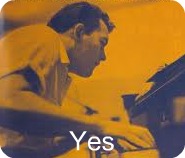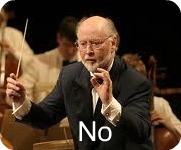Doug Ramsey's Blog, page 4
January 29, 2011
Other Places: Stanko In Sydney
The veteran Polish Trumpeter Tomasz Stanko's late-blooming fame puts him in demand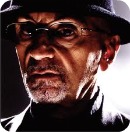 around the world. His reflective musings often inspire reviewers to compare him to Miles Davis. Davis was an inspiration, but Stanko long since absorbed, internalized and personalized the influence. Tonight he is playing in Australia at the Sydney Festival with his band of young Scandinavians. In the Sydney Morning Herald, John Shand traced Stanko's career, including his importance to the film composer Krsystof Komeda.
around the world. His reflective musings often inspire reviewers to compare him to Miles Davis. Davis was an inspiration, but Stanko long since absorbed, internalized and personalized the influence. Tonight he is playing in Australia at the Sydney Festival with his band of young Scandinavians. In the Sydney Morning Herald, John Shand traced Stanko's career, including his importance to the film composer Krsystof Komeda.
Komeda was the composer/pianist who penned scores for several Polanski films, including Rosemary's Baby. Stanko stayed for six years, absorbing the potential for a distinctly European jazz. ''Komeda started to write very modern compositions,'' recalls Stanko, ''and he needed a free [improvising] player. I was maybe the only free player in Poland at this time.''
He was the vinegar in Komeda's melodic dressings; it was only when Komeda died in 1969 that Stanko devoted himself to his own music. Often the stimulus came from poetry, painting or film. ''I was always into art. My first guru was Van Gogh, and then Modigliani, now I am really a fan of any kind of visual art.''With his current quintet - which has two Finns (pianist Alexi Tuomarila and drummer Olavi Louhivuori) and two Danes (guitarist Jakob Bro and bassist Anders Christensen) - he recorded The Dark Eyes of Martha Hirsch, inspired by an Oskar Kokoschka portrait in New York's Neue Galerie. The gallery is a 15-minute walk from Stanko's apartment, and he often goes there for stimulus.
To read the whole piece, go here.
That quintet toured Poland in 2009. Here they play a Stanko composition called "So Nice," which you are unlikely to confuse with the Brazilian pop tune of the same title.
January 26, 2011
Catching Up With The NEA Jazz Masters
When the National Endowment for the Arts Jazz Masters Awards ceremony and associated events happened a couple of weeks ago, I was caught on the horns of a 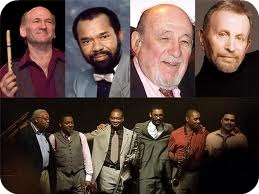 deadline dilemma and had to skip the televised proceedings. I've been catching up with the honors to David Liebman, Hubert Laws, Orrin Keepnews, Johnny Mandel and the Marsalises. Better late than never. The ceremony at Lincoln Center in New York City on January 11 ran long, although not as long as some previous years' events. It included nicely made five-minute mini-documentaries about each of the 2011 jazz masters. We'll show you two of them and lead you to the others.
deadline dilemma and had to skip the televised proceedings. I've been catching up with the honors to David Liebman, Hubert Laws, Orrin Keepnews, Johnny Mandel and the Marsalises. Better late than never. The ceremony at Lincoln Center in New York City on January 11 ran long, although not as long as some previous years' events. It included nicely made five-minute mini-documentaries about each of the 2011 jazz masters. We'll show you two of them and lead you to the others.
The group award to Ellis Marsalis and his sons Branford, Wynton, Delfeayo and Jason stirred up criticism. The criticism is water over the dam; the award went to most of that extraordinary New Orleans family. My only substantial reservation is that Dolores Marsalis, the matriarch whose strength is the family's center, wasn't named on the plaque.
The NEA portrait of Keepnews came close to giving an understanding of what a gifted producer can do for music.
To find the video portraits of all five of the masters for this year and several earlier ones, go here. To see the entire two-hour NEA ceremony in streaming video, click here. And if that isn't enough for you, click here and see a panel discussion, complete with at least one surreal speech in the guise of a question from the audience.
January 22, 2011
John Williams Or John Williams?
An old bit of confusion revived for a time this week when Mosaic Records announced a Stan Getz box set to be issued next spring. The electronic news release about the 1950s Getz quintet recordings for Norman Granz's Norgran label mentioned Getz, Bob Brookmeyer and "pianist Johnny Williams (who later became film composer John Williams)."
After several people hopped on the web with corrections, Mosaic commander-in-chief Michael Cuscuna explained, "Earlier version of the write-up got pasted in by mistake." Mosaic corrected the goof. Here is further clarification. The man on the left below is John Thomas Williams, the pianist who worked with Getz, Brookmeyer, Zoot Sims, Al Cohn and Cannonball Adderley in the '50s. The man on the right is John Towner Williams, who had a brief career as a jazz pianist and went on to Star Wars and the Boston Pops.
For a few decades the "Yes" John Williams took side trips into successful careers in banking and government. He lives in Florida and, at 82, still plays gigs, mostly solo piano. When I spoke with him this morning, he sounded content, although he allowed that he wouldn't mind having the "No" John Williams's royalty income. To further dissipate confusion, here's a rerun of a Rifftides piece about him that first appeared on April 18, 2006. It contains a link to a reissue CD of Williams' widely praised trio records.
THAT John WilliamsDuring long stretches of 1953 and '54, John Williams was the pianist in Stan Getz's quintet and quartet. Wiliams is often described in biographies as a disciple of Bud Powell who was also influenced by Horace Silver. That is true. It is also true that oxygen influences flame, a fact that tells us nothing about the differences among flames. In the population of pianists influenced by Powell and Silver, Williams was identifiable by a keyboard touch that produced a spikey, percussive, rollicking forward motion, an infectious swing. Almost in contradiction, at the same time he somehow achieved a smoothness of phrasing that invested his improvised lines with the logic of inevitability. He managed to make his listeners anticipate what was coming in a solo and yet surprise them when he got there.
Williams' first album under his own name was John Williams, a ten-inch LP on the Emarcy label, recorded in 1954. His trio had Bill Anthony on bass and the unique Detroit drummer Frank Isola, fellow members of the Stan Getz group. Williams jokes today that he often wonders who got the third copy of the album after he and his mother each bought one. It may not have been a big seller, but it quickly became a favorite of musicians and, after Emarcy pulled it, of collectors. In the 1990s, a broker of rare LPs who sold to Japanese LP zealots told me that a mint copy of John Williams was going in Japan for upwards of $300. I blush to confess that I sold him my beat-up copy for considerably less than that, making him wait while I first copied it to tape. As we listened, I hummed along to Wiliams' solos, so embedded in my brain had they become over four decades of nearly wearing out the album.
It was a puzzle, given the LP's iconic status, why Emarcy did not reissue it on CD, and why Verve did not bring it out after the company acquired the Emarcy catalog. A good guess is that the decision was made by accountants. Time has cured that ill. Copyright laws in Spain declare that after fifty years, recorded material is fair game (I'm not sure that's the exact wording of the law). So, the resourceful Fresh Sound label has put on one CD John Williams and the pianist's second Emarcy album, a twelve-inch LP called John Williams Trio, recorded in 1955. This belated event probably doesn't do much for the inflated price of the original LPs, but it is a boon to the substantial number of Williams fans who have been clamoring for a reissue. It may also gain him new fans.
The second album, done in three sessions with shifting personnel among bassists and drummers, doesn't have quite the concentrated charm of the ten-inch 1954 session. That is in part, I suspect, because Frank Isola is on only one track. Nonetheless, it has wonderful moments. Taken together, the twenty tracks capture John Williams when his playing was full of freshness, vigor and peppery lyricism. By all accounts, including the evidence of an appearance with Marian McPartland on Piano Jazz, it still is. He has never stopped playing, but he took a few decades off to become a banker and, for twenty years, a city commissioner of Hollywood, Florida. In conversation, Williams tends to deprecate his playing in the 1950s as inadequate, an evaluation that flies in the face of the wisdom of his employers--StanGetz, Bob Brookmeyer, Cannonball Adderley, Al Cohn and Zoot Sims among them--and of listeners who have been stimulated by his work for half a century.
I should point out, although by now it may be obvious, that this John Williams is not the Star Wars John Williams.
For news about the Getz Quintet reissue featuring THAT John Williams, go here.
January 21, 2011
They Still Call It JazzFest
The New Orleans Jazz and Heritage Festival yesterday announced the lineup for the 2011 edition. The festival will run the weekends of April 29-May 1 and May 5-8. In New Orleans, they still refer to the event as JazzFest. Here is a partial list of the hundreds of major attractions.
Arcade Fire, Bon Jovi, Jimmy Buffett, Kid Rock, John Mellencamp, Wilco, Willie Nelson, The Strokes, Robert Plant, Ms. Lauryn Hill, Tom Jones, Jeff Beck, Sonny Rollins, John Legend & The Roots, The Avett Brothers, Cyndi Lauper, Wyclef Jean, The Decemberists, Bobby Blue Bland, Mighty Clouds of Joy, Edie Brickell, Kebâ•˙Moâ•˙, [image error]Rance Allen, Ahmad Jamal, RAM, Punch Brothers, Ron Carter Trio, Fisk Jubilee Singers, Ivan Lins, Charlie Musselwhite.
A few of the Louisiana performers:
Trombone Shorty & Orleans Avenue, The Neville Brothers, Dr. John, Allen Toussaint, Irma Thomas, Mystikal, Pete Fountain, Kermit Ruffins & the Barbecue Swingers, Better Than Ezra, Rebirth Brass Band, Galactic, Tab Benoit, The Radiators, Cowboy Mouth, Ivan Neville˙s Dumpstaphunk, Marcia Ball, The Dirty Dozen Brass Band, Ellis Marsalis, Walter "Wolfman" Washington, Sonny Landreth, Henry Butler, Papa Grows Funk, Big Sam's Funky Nation, John Boutté, Terence Blanchard, Amanda Shaw, The New Orleans Bingo! Show, Preservation Hall Jazz Band, Johnny Sketch & the Dirty Notes, Nicholas Payton, Astral Project, Big Chief Monk Boudreaux & the Golden Eagles and Banu Gibson.
For a complete list of performers and information about the festival, go here.
JazzFest, as it was christened at its birth in the late 1960s, began as the purest of jazz festivals, integrated with a judicious smattering of associated events involving Louisiana food and culture. The 1968 and '69 festivals, along with certain years at Newport and Monterey, were among the music's milestone large events. They were not big money makers and they did not fit some New Orleans movers' and shakers' vision of what a festival should be in a city whose motto is "Let The Good Times Roll." These were the headliners in 1968, JazzFest's first year:
Louis Armstrong, Duke Ellington, Woody Herman, Dave Brubeck & Gerry[image error] Mulligan, Pete Fountain, Ramsey Lewis, Max Kaminsky, Lurlean Hunter, Art Hodes, Pee Wee Russell, Cannonball Adderley, Carmen McRae, Ray Bryant, Teddi King and Gary Burton.
Among dozens of New Orleans musicians were:
Sharkey Bonano and his Kings of Dixieland, Al Belletto, Danny Barker, the Papa French band, the Olympia Brass Band, Louis Cottrell, Willie Tee And The Souls, the Dukes of Dixieland, June Gardner Quartet and Armand Hug.
Most of the concerts in '68 and '69 were sit-and-listen affairs in the Municipal Auditorium, with a sprinkling of riverboat cruises and events in Jackson Square. The focus was on jazz and its central role in the history and life of the city.
In 1970, George Wein's Festival Productions company took over JazzFest from the locals who created it, renamed it the New Orleans Jazz and Heritage Festival andwith promotional skill and canny marketingmade it the world-famous party it is today. The fact that the bash is overwhelmingly pop, secondarily heritage and minimally jazz doesn't bother the promoters and doesn't bother New Orleans. It was probably inevitable in the city that care forgot, that JazzFest would become a big, fat, swirling celebration full of R&B, rock, country, gospel, Zydeco and soul. In the 2011 lists above, you may have to do a little searching to find the names of jazz artists.
[image error]More than five years after Katrina, with the city recovering but much of it still resembling a post-war nightmare, a party called a jazz festival symbolizes New Orleans' determination to recover. That speaks of a spirit that rises from within New Orleanians and cuts through a malaise of failed leadership, politics and bureaucracy. For eight years, I was a New Orleanian. I understand that spirit. It grows out of the curious combination of laissez faire and obstinance that animates folks whose blood has a component of coffee with chicory.
Partying, food, boogying and getting down are wonderful. Few Orleanians would disagree with any of that. But this is the city that gave us Louis Armstrong, Sidney Bechet, Jelly Roll Morton, Henry "Red" Allen, Barney Bigard, Raymond Burke, Danny Barker, Paul Barbarin, James Black, Johnny Vidacovich, Al Belletto, Terence Blanchard, Donald Harrison and the Marsalises.
It is clear that popular taste no longer embraces jazz as a central element. It is equally clear that the New Orleans Jazz and Heritage Festival is here to stay as a kaleidoscope of entertainment. It would be welcome if the city also had room for a festival that honored and nurtured the music that is the living symbol of the New Orleans spirit. Somehow, jazz ended up with a bit part in what the natives still call JazzFest.
January 18, 2011
Correspondence (Illustrated): Bird And Desmond
Rifftides reader John Bolger writes with a suggestion:
Somebody has posted the legendary interview between Paul Desmond and Bird on YouTube. I had a seen transcript of this before but never heard the interview. Rare and wonderful! Thought you might like to know - might be worth piece in Rifftides.
It might, indeed. In the spring of 1954, Desmond and Charlie Parker were guests on John McLellan's radio program on WHDH, Boston. In two previous shows, McLellan hadn't been able to get much out of Parker. This time, Desmond gently hijacked the interview and Bird opened up to him. In a letter to his friend Jimmy Lyons, quoted in Take Five: The Public and Private Lives of Paul Desmond, Desmond wrote, "I don't know whether it was professional courtesy or the half-pint of bourbon, but old Charlie talked up a storm."
A year later, at the age of 34, Charlie Parker was dead. They say.
For more on the friendship between Parker and Desmond, and Desmond's determination not to be a junior Birdman, see Take Five the book.
Attention Acne Sufferers And Musicologists
Not long ago, we told you about stealth comments intended to lure Rifftides readers to websites that sell stuff. This just came in from the United Kingdom:
just signed up at www.artsjournal.com and wanna say hi to all the guys/gals of this board!
That cheery greeting was disguised as a comment about a Rifftides post from March 2, 2006 and evidently sent in hopes that we would publish it with the link to an advertisement for an acne treatment. The ruse didn't work, but it sent the staff back to look at the original post. Oddly, the bogus comment is the only one the story has attracted in the nearly six years it has been sitting in the archives. The story came from a reliable source, so, we're going to run it by you again.
A Flat, But Sharp, Story
Several versions of a joke usually beginning something like, "A note walks into a bar...." are floating around the internet. Buddy DeFranco forwarded the most elaborate I've seen. The Rifftides management makes no claims about the reliability of the musicology in this tale:
A C, an E-flat, and a G go into a bar. The bartender says: "Sorry, but we don't serve minors." So, the E-flat leaves, and the C and the G have an open fifth between them. After a few drinks, the fifth is diminished: the G is out flat. An F comes in and tries to augment the situation, but is not sharp enough.A D comes into the bar and heads straight for the bathroom saying, "Excuse me. I'll just be a second."
An A comes into the bar, but the bartender is not convinced that this relative of C is not a minor.
Then the bartender notices a B-flat hiding at the end of the bar and exclaims: "Get out now! You're the seventh minor I've found in this bar tonight."
The E-flat, not easily deflated, comes back to the bar the next night in a 3-piece suit with nicely shined shoes. The bartender (who used to have a nice corporate job until his company downsized) says: "You're looking sharp tonight, come on in! This could be a major development." This proves to be the case, as the E-flat takes off the suit, and everything else, and stands there au naturel.
Eventually, the C sobers up, and realizes in horror that he's under a rest. The C is brought to trial, is found guilty of contributing to the diminution of a minor, and is sentenced to 10 years of DS without Coda at an upscale correctional facility. On appeal, however, the C is found innocent of any wrongdoing, even accidental, and that all accusations to the contrary are bassless.
The bartender decides, however, that since he's only had tenor so patrons, the soprano out in the bathroom, and everything has become alto much treble, he needs a rest - and closes the bar.
If you really want to know about the acne treatment, use the "Contact Me" link in the center column and the staff will send you the url. You need not be a resident of the UK to apply.
January 17, 2011
Martin Luther King, 1929-1968
From the Reverend Martin Luther King's foreword in the program booklet for the 1964 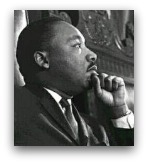 Berlin Jazz Festival:
Berlin Jazz Festival:
Jazz speaks for life. The Blues tell the story of life's difficulties, and if you think for a moment, you will realize that they take the hardest realities of life and put them into music, only to come out with some new hope or sense of triumph. This is triumphant music.
Modern Jazz has continued in this tradition, singing the songs of a more complicated urban existence. When life itself offers no order and meaning, the musician creates an order and meaning from the sounds of the earth which flow through his instrument.It is no wonder that so much of the search for identity among American Negroes was championed by Jazz musicians. Long before the modern essayists and scholars wrote of "racial identity" as a problem for a multi-racial world, musicians were returning to their roots to affirm that which was stirring within their souls.
For example, in 1944:
And in 1986:
January 15, 2011
New Life For The Jazz Bakery
There is good news for jazz listeners in Southern California. The Jazz Bakery can stop roaming. That modern-day rarity, a major jazz club in Los Angeles, the Bakery lost its lease in 2009 and has been presenting concerts in a variety of halls, moving from one spot to another. Now it can reestablish itself in Culver City near where it started nearly[image error] two decades ago. A grant from the Annenberg Foundation and an agreement with a Culver City municipal agency will help make the new building a reality where founder Ruth Price wanted it. For details, see Chris Barton's report in The Los Angeles Times.
During my Los Angeles period, the Bakery was a favorite haunt. Let's hope that the new place will have the intimacy that made it a pleasure to hear music like this, played by Howard Alden and the late George Van Eps at the Jazz Bakery in 1994.
To see a Rifftides archive piece about Ruth Price, a bit of Jazz Bakery history and a video of Ruth singing, click here.
January 13, 2011
Correspondence (Illustrated): RIP Margaret Whiting
Rifftides reader Mark Stryker sent this reaction to the previous entry. Mr. Stryker is the music critic of The Detroit Free Press. He has good ears.
Just a coda re: "Moonlight in Vermont," whose unusual lyrics were written by John Blackburn. The A section words are actually in the form of a haiku, with 5-7-5 syllable pattern. Nor do the lyrics rhyme. Also, a note on the interpretation: Whiting takes a big (and to my ear unfortunate) breath leading from the bridge into the final A section, separating the words "lovely" and "evening," which breaks up the single image in the lyric that continues over the bar line: "People who meet in this romantic setting/are so hypnotized by the lovely evening summer breeze."
Without disrespecting Whiting's gifts, compare to how Jo Stafford sings it.
Singing a slightly alternate lyric, she doesn't take the breath where Whiting does, making it through the bar line before grabbing some quick air after the first word ("shadows") of the new 8 bars. But you can tell she's trying to keep the line focused into single, unbroken thought, and her phrasing does give the impression of a more liquid, expressive legato, especially since the arrangement slipped into rubato on the bridge.
Of course, the master of using breath-control technique, the legato line and savvy phrasing to heighten the meaning of a lyric is Frank Sinatra. "Moonlight" was always a showcase for him in that way. He takes it 'way further than Stafford, connecting the bridge to the last A with a suspended phrase that raises the tension to a peak before a wonderful release, making it all the way to the end of the sentence in the second bar before breathing; he even ornaments the word "evening" with a little downward portamento slide. The second time through the tune he ups the ante in what for me is one of the most electric moments in all of Sinatra Land. Over a rubato accompaniment, he sneaks a breath between "hypnotized" and "by" and then suspends time f-o-r-e-v-e-r. When he finally slides into the final 8 bars, the key slides up a half-step (thanks, Billy May) and the combination of Sinatra's phrasing and the arrangement has the music reaching for the stars. Wow.
January 12, 2011
Margaret Whiting
News of Margaret Whiting's death at 86 on Monday must have sent her fans to the shelves in search of her recording of "Moonlight in Vermont." She recorded the song in 1943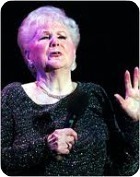 when she was 19. It helped make her a star, and she stayed on the charts well into the 1960s, surviving even as rock and roll displaced scores of her pop music contemporaries.
when she was 19. It helped make her a star, and she stayed on the charts well into the 1960s, surviving even as rock and roll displaced scores of her pop music contemporaries.
Johnny Mercer did not write the lyric for "Moonlight in Vermont," but when he was the creative power at Capitol Records he chose the song for Whiting. Mercer and Frank Loesser helped shape her singing from the time she was the grade school daughter of their fellow songwriter Richard Whiting. In a passage from Gene Lees' Mercer biography Portrait of Johnny, Whiting recalled how Mercer prepared her for the record session.
"...Johnny said, 'I want you to think, what does Vermont mean to you?'"I said, 'A calendar with a church in the snow.'
"He said, 'there are more images.'
"I said, 'Well, there's got to be summer, winter, fall. Fall. Everybody goes to see Vermont in the fall for the leaves.'
"He said, 'I want you to think of those pictures. I want you to think of the coming of spring. I want you to think of summer, people swimming and people walking, people having a lovely time outdoors.'
"So we go in and record it and I'm envisioning all these pictures. It gave me something to go on. That's what he taught me and that's what Loesser taught me. Pick up that sheet music and look at those lyrics and make them mean something. Read the lyric aloud, over and over and over. Recite it until you get it. Your own natural instincts will tell you."
Here's the record: Trumpeter Billy Butterfield and his orchestra, with Margaret Whiting's vocal.
For an obituary of Margaret Whiting, go here.
Doug Ramsey's Blog
- Doug Ramsey's profile
- 2 followers


